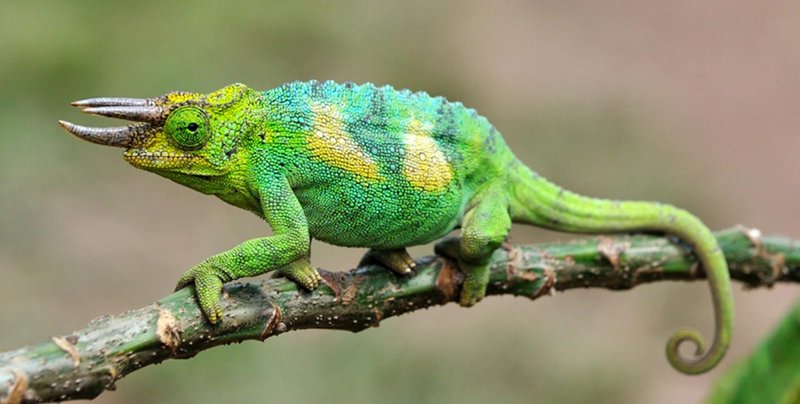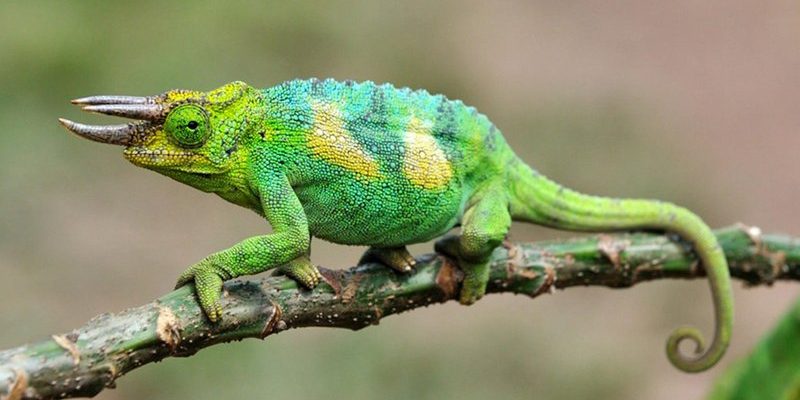
If you’ve ever been mesmerized by their shifting hues, you’re not alone. These chameleons, native to the forests of East Africa, are known for their striking appearance and unique behaviors. But before diving headfirst into breeding, it’s essential to grasp what makes these creatures tick. Think of breeding Jackson’s chameleons as orchestrating a delicate symphony. Every note (or requirement) must come together harmoniously for everything to flow smoothly.
Understanding The Basics of Jackson’s Chameleon
Jackson’s chameleons, scientifically known as *Trioceros jacksonii*, are among the most popular pet chameleons. They’re recognized for their distinctively three-horned males, impressive color-changing capabilities, and relatively docile nature. Typically, these chameleons live in tropical climates, which means their breeding conditions need to mimic this environment as closely as possible.
Breeding chameleons isn’t just about pairing a male and female; there’s a lot more to consider. These reptiles have specific habitat, dietary, and environmental needs that must be met to ensure successful breeding. For example, they require a well-structured terrarium that allows them to climb and hide, reflecting their natural habitat. Have you ever thought about how a chameleon feels in its environment? Imagine being stuck in a cramped space; it’s stressful! Providing an adequate space helps reduce stress, which is crucial for breeding.
Setting Up the Right Habitat
Creating a suitable habitat for your Jackson’s chameleons is non-negotiable. Start with a terrarium that’s at least 4 feet tall and 2 feet wide. Chameleons love to climb, and their vertical space is just as important as horizontal. Use a combination of branches, vines, and leafy plants to offer plenty of surfaces for climbing and hiding.
Temperature and humidity play vital roles in their well-being. Keep daytime temperatures around 75-85°F (24-29°C) and drop them to about 60-70°F (15-21°C) at night. Additionally, maintaining humidity levels between 50-70% is essential. Regular misting or a fogger can help achieve this. Picture yourself in a warm, humid rainforest. That’s the atmosphere you want to create!
It’s also important to include UVB lighting in your setup. Chameleons need UVB rays to synthesize vitamin D3, which is crucial for calcium absorption. A lack of calcium can lead to serious health issues, including metabolic bone disease. So, make sure you’re providing the necessary lighting, and, just like watering a plant regularly, keep a consistent routine.
Choosing The Right Breeding Pair
Selecting the right breeding pair is critical. Ideally, you want to pick healthy adults between 6-12 months old. Younger chameleons may not yet have developed the necessary size and strength to breed successfully. Additionally, avoid using siblings to prevent inbreeding, which can lead to genetic issues and weaken the offspring.
When it comes to choosing a male and female, look for vibrant colors and healthy body condition. A male with a strong breeding display will often show off his vibrant colors, puffing up and exhibiting dominant behaviors. This is a good sign! The female should also appear healthy and robust, without any signs of physical distress.
It’s also wise to monitor the pair before introducing them for breeding. You might notice the male displaying territorial behavior, which is normal. However, if aggression escalates, it could be a sign they’re not compatible. Here’s the thing: Like any relationship, not every pair can coexist happily. Be prepared to separate them if necessary.
Nourishing Your Chameleons for Breeding
Diet is just as crucial as habitat when breeding Jackson’s chameleons. A balanced diet contributes to their health and enhances their breeding capabilities. Make sure to offer a variety of insects, like crickets, mealworms, and roaches. Think of it as a buffet—mix things up to keep their diet interesting and nutritious.
You should also supplement their diet with calcium and vitamin powder, especially during the breeding season. Just like how athletes need extra nutrients for performance, your chameleons will benefit from added nutrition to give them energy and vitality during breeding. Dusting their food with a calcium supplement every other day can do wonders.
Additionally, ensure they have access to clean water. Mist the enclosure daily, as chameleons often drink water droplets. It’s a simple yet effective way to keep them hydrated. Imagine walking through a jungle and needing a refreshing drink—chameleons have the same instinct, just in their own way.
Breeding Cycles and Mating Behaviors
Here’s the thing: Jackson’s chameleons don’t breed year-round; they have distinct breeding seasons. In their natural habitat, this usually occurs during the warmer months. You can mimic this cycle by adjusting the temperature and lighting conditions in their habitat. Try gradually increasing the temperature and exposing them to longer daylight hours to mimic spring.
During mating, the male will display a variety of behaviors to attract the female. This might include changing colors, puffing up, and even doing little dances! It’s fascinating to watch, and it’s entirely normal for a male to engage in these displays. However, it’s essential to observe the pairing closely.
Sometimes, the female may refuse to mate, especially if she feels stressed or not ready. If this happens, don’t force the situation. Allow her some time to adjust and feel secure. Think of it like dating—sometimes, a little patience can go a long way.
Challenges in Breeding Jackson’s Chameleons
While breeding Jackson’s chameleons can be rewarding, it’s not without its challenges. One major issue is the stress that can arise during mating. Stress can lead to health problems for both the male and female, so it’s important to keep their environment as calm as possible.
Another potential hurdle is dealing with infertility. Sometimes, even with all the right conditions, the female may not produce viable eggs. If this happens repeatedly, it could indicate underlying health issues. Regular veterinary checkups can help identify any problems early.
Finally, be prepared for egg-laying. The female will create a nest in the substrate, where she will lay her eggs. It’s crucial to provide her with sufficient substrate to dig and bury the eggs. After laying, she may exhibit signs of fatigue, so providing extra care and privacy during this time is essential.
Post-Breeding Care for Hatchlings
Once your female lays her eggs, the waiting game begins. Jackson’s chameleons usually take about 4-10 months to hatch, depending on environmental conditions. During this time, you’ll want to keep the eggs in a safe, humidity-controlled environment.
Once they hatch, the baby chameleons will be tiny and vulnerable. It’s crucial to offer them a safe space with appropriate humidity and temperature. They’ll need small food items like fruit flies and pinhead crickets; remember, they’re just figuring out the world. Use a soft touch when handling them, as they’re delicate.
As they grow, be mindful of their environment. Baby chameleons can be territorial. This means you might need to house them separately to avoid stress and competition. Keeping an eye on their health is essential, too. Watch for signs of dehydration, stress, or illness.
Breeding Jackson’s chameleons can be a complex journey filled with ups and downs. Just like nurturing any relationship, it requires attention and care. If you’re prepared to face the challenges head-on, rewards can be as vibrant and beautiful as their colors.
In conclusion, breeding Jackson’s chameleons can be a fulfilling and enlightening experience. With the right knowledge and preparation, you can navigate their unique requirements while overcoming challenges along the way. Remember that patience and empathy are your best allies in this colorful adventure, and who knows—you might just create a vibrant new generation of these captivating creatures.

